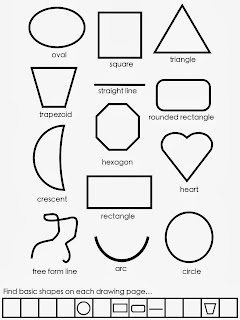Visual expression
frequently supports or inspires writing by providing
context, mood, details etc. Writing supplies clarity, definition and sometimes generalization. Both are dynamic and both are
expressive. They
are most powerful when used together….
Since we use abstract code based
language to write, we often find it necessary to add pictures. We ask our children to illustrate essays and stories, but never really teach simple figures.
Thinking in pictures enables us to
visualize original ideas, and share them with others. Think about the birds nest inspired Peoples Stadium in China. Do you think the designers just walked into the
government Olympic committee and said, “We want to make a beautiful building based on the idea of
a bird’s nest.” Or did they use many, many original drawings to communicate their unique vision?
To visualize
an idea you must be able to think in pictures. Usually, people think in pictures then describe the pictures in writing (usually with
an illustration or a diagram.)
To express a truly original idea you must be able
to draw it. Clipping wont do. You wouldn’t expect an author to
create a novel out of “sampled” sentences from other author’s work. An original Idea cannot be expressed from clip art. In both these cases you would
be limited by what has already been expressed.
So, we should be teaching our
children to draw a wide range of simple figures, skill that enables Pre-k children to create stories...
They should become ARTiculate. This is visual expression as language, simple but very important and largely ignored by education. This is very different than creating fine art.
They should become ARTiculate. This is visual expression as language, simple but very important and largely ignored by education. This is very different than creating fine art.
Artists see shapes in everything... that's how they begin. Then they add details such as shading, perspective, color…
 DRAW! is a book of easy,
reproducible art lessons to help kids and teachers visualize, realize
and share their unique ideas. To think conceptually.
DRAW! is a book of easy,
reproducible art lessons to help kids and teachers visualize, realize
and share their unique ideas. To think conceptually.
The lessons are based on simple shapes which
everyone already knows, they are meant to provide information not style or personality, that will come from the artist.
I has been my experience that when children draw a cat, they want their picture to be understood as a cat. Perhaps a red cat with blue stripes, but the basic cat parts should be there. So, I designed a system to give the correct visual information they needed to express the idea of cat in the simplest possible form. It made them happy to be able to express this idea and their cats expressed their individual personalities wonderfully.
When they were confident that their painting would be understood, they became very creative... good skills foster creativity. This is a wonderful way to teach visual learners who are comfortable with the basics, no confusing extra visual language.
I've used this method successfully to teach children to observe, visualize and to express themselves as they move naturally towards writing, because they eventually discover that it is more efficient to write cat then to draw a cat. After all, a drawing is a hard copy of an idea. And the word cat is an encoded short hand, a generic symbol for a complex idea that everyone who has experience with cats understands.
This method continues to be used and is still popular with children and parents. When I finally realized that teachers didn't know how to teach simple drawing (and yet asked their students to illustrate everyday ) I decided to create a tool for classrooms Pre-k to 6th grade.
There are 145 pages and over two hundred little lessons in DRAW! which can be purchased as an e-book at TPT or at beginnerswork.com as a soft cover book.








No comments:
Post a Comment